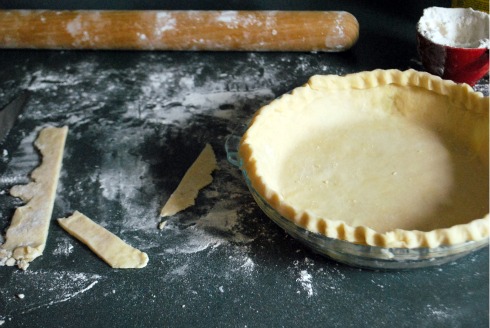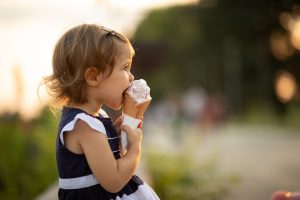Pie Baking 101

In case you haven’t heard, making pies is the new food must-do. Not that I think they have ever really gone out of fashion, but with cupcakes and macarons taking centre stage in the past few years, it’s nice to see a classic regaining it’s popularity.
If you look through the many recipes for pie crust available online, and in cookbooks, and magazines, each one differs slightly. How are you ever supposed to know which pie crust will really yield the best results?
Prior to writing this post, I tested five different recipes. Yes, this means I now have 10 single piecrusts in my freezer ready to be turned into quiches, pot pies and Christmas desserts. But here’s the thing, I wanted to test the true difference between an all-butter crust and a butter/shortening blend, and once and for all, I needed to figure out just what exactly the ratio of fat to flour should be in a good recipe.
Here’s what I learned:
- The colder your ingredients, the better. Keep your butter chilled until the very last minute, and add an ice cube or two to any liquids you are adding to your recipe. I like to cut my butter into one-inch cubes and pop them in the freezer for a minimum of five minutes before making my pastry. I also like to put my flour in a bowl and refrigerate it for several minutes before starting.
- On the topic of liquids, the best pie crusts came from recipes that included a touch of acid. This can be white vinegar, cider vinegar or lemon juice. The acid helps to break down the gluten and results in a flakier crust.
- Work quickly when you’re making pastry. Your hands are warm and as soon as you begin working with the butter, it will soften. I like to use a mixer for my dough whenever possible, as it keeps my hands away from my product. I don’t like the idea of making the dough in a food processor, as the butter is chopped too finely with this method. Ultimately, a pastry blender is probably the best tool to use.
- An all-butter crust yielded the best flavour and colour. It was my favourite, and I will now always omit the shortening. It is true that the flakiest crust came from the recipe that used some shortening, but the flavour wasn’t as good, and I always think flavour should trump appearance.
What is your favourite pie flavour? Do you make your crust or do you prefer to buy a store-bought variety?
Simple All-Butter Pie Crust
You’ll Need
- 2½ cups all-purpose flour, plus extra for rolling
- 1 cup unsalted butter, very-cold, cut into 1/2 inch cubes and frozen for 5 minutes
- 1 tsp salt
- 1 tsp sugar
- 4 to 6 Tbsp ice water
- 1 Tbsp cider vinegar
How to Make
- Combine flour, salt, and sugar in the bowl of an electric mixer and place in the fridge for 5 minutes.
- Add butter and blend together using the paddle attachment of your mixer. The mixture should resemble a course meal with small bits of butter visible.
- Add the vinegar and ice water, 1 Tbsp at a time, blending until mixture just begins to clump together. If you pinch the crumbly dough and it holds together, it’s ready. If the dough doesn’t hold together, add another Tbsp of water and pulse again.
- Remove dough from the mixer and place in a mound on a piece of plastic wrap. Gently shape into two discs. Knead the dough just enough to form the discs.
- Sprinkle a little flour over the discs and wrap each one in plastic wrap. Refrigerate at least one hour, or overnight.
- Proceed with your pie recipe.
















